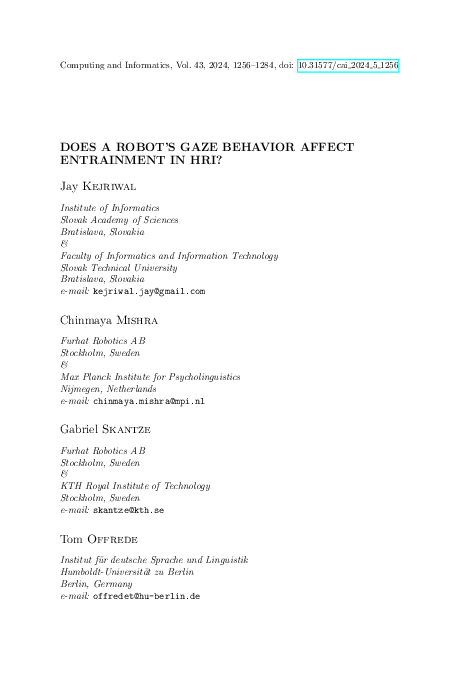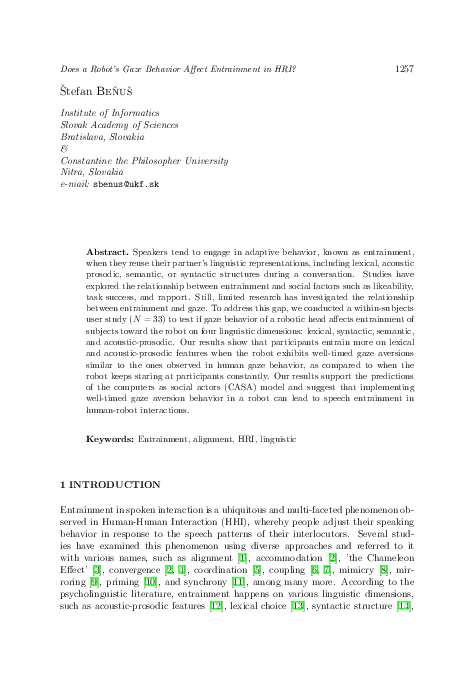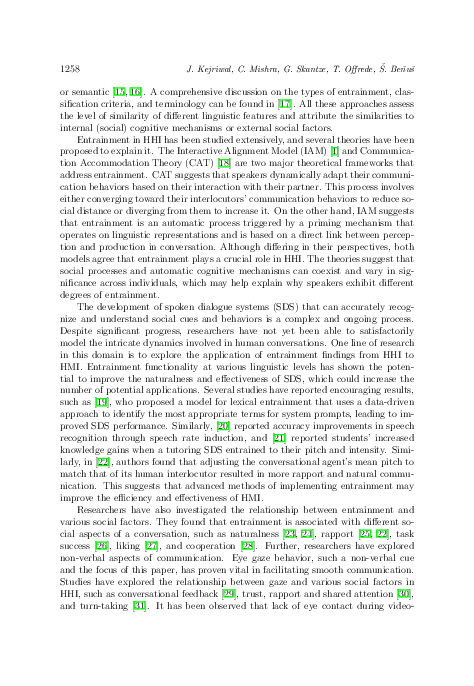Does a Robot's Gaze Behavior Affect Entrainment in HRI?
keywords: Entrainment, alignment, HRI, linguistic
Speakers tend to engage in adaptive behavior, known as entrainment, when they reuse their partner's linguistic representations, including lexical, acoustic prosodic, semantic, or syntactic structures during a conversation. Studies have explored the relationship between entrainment and social factors such as likeability, task success, and rapport. Still, limited research has investigated the relationship between entrainment and gaze. To address this gap, we conducted a within-subjects user study (N = 33) to test if gaze behavior of a robotic head affects entrainment of subjects toward the robot on four linguistic dimensions: lexical, syntactic, semantic, and acoustic-prosodic. Our results show that participants entrain more on lexical and acoustic-prosodic features when the robot exhibits well-timed gaze aversions similar to the ones observed in human gaze behavior, as compared to when the robot keeps staring at participants constantly. Our results support the predictions of the computers as social actors (CASA) model and suggest that implementing well-timed gaze aversion behavior in a robot can lead to speech entrainment in human-robot interactions.
reference: Vol. 43, 2024, No. 5, pp. 1256–1284


